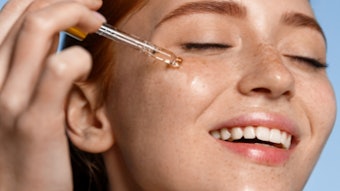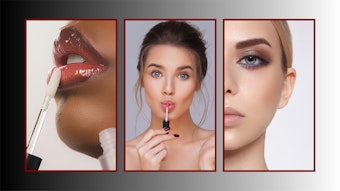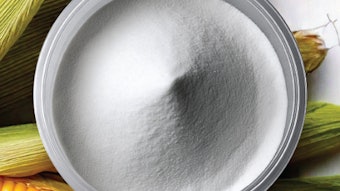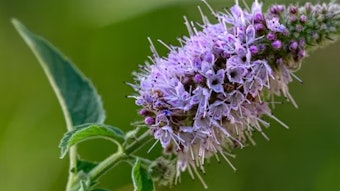
The 7th edition Cosmetic Victories competition, presented by The Cosmetic Valley-ESSEC endowment fund, recently recognized cosmetic innovations in both academia and industry, as previously described. Six finalists in the two categories were selected from 80 projects and narrowed down to two winners.
Among the academic finalists, Wageningen University and Research, The Netherlands, was honored for the organic microalgal farming and milking of cosmetic ingredients. Assistant Professor/Biorefinery Theme Leader Iulian Boboescu, of the university, describes the innovation here.
See related: Cosmetic Victories Winner Profile: Sami Halila, Ph.D., on Green Gelling Agent for Oil Phases
What drove your innovation? What it is and how is it used?
Some of these, such as proteins, sugars, fatty acids, pigments and even polymers can be used to produce animal- and cruelty-free meat and dairy replacements, essential oils, antioxidants, cosmetics and even bioplastics. For this reason, together with my team at the Bioprocess Engineering Chair of Wageningen University in the Netherlands, I am developing new technologies that will allow us to tap into the full potential of this new so-called cellular-agriculture.I believe that there are more efficient and sustainable ways of sourcing our food and the other products we use in our daily lives. For instance, microorganisms such as bacteria, yeast and microalgae could directly convert leftovers from food processing activities or spent grain from the brewing industry, in addition to carbon dioxide into valuable products.
...By directly converting carbon dioxide into emulsifiers, foaming agents, antioxidants and antibacterial agents, ... microalgae could make this industry carbon neutral and even carbon negative, helping it to achieve its environmental goals."
More specifically, our innovation [creates] the ability to develop new designer natural solvents, tailored-made to extract specific products of interest from cells. In addition, by exposing these cells to a mild electric field, we can open and close small pores in their membranes, allowing the recovery of these products without killing them. For this reason, the process is known as cell-milking.
This is a game-changer, as it allows these cells to continuously produce valuable compounds that we can immediately recover without going through the classic time- and resource-consuming cycles of starting a culture, allowing it to grow, and harvesting and processing it before starting a new culture again.
What is novel about it? How might it shape cosmetics and personal care product development?
The ability to remove, in real-time, the compounds these microorganisms produce is groundbreaking. Besides the simplification, speed and cost reduction advantages of this technology, milking these cells is, in some instances, the only way we can produce some of these products, such as terpenoids. These quickly become toxic for the cells as they accumulate them, and if not removed, they will stop producing them and even stop growing.
See related: Cosmetic Victories Profile: Claude Grison, Ph.D., on Ecocatalysts for Sustainable Fragrances
Thus, the implications of this technology for the cosmetics industry are twofold. First, by using natural and non-toxic solvents to recover active and functional ingredients, the risk of product contamination with toxic and carcinogenic compounds is eliminated. Second, by directly converting carbon dioxide into emulsifiers, foaming agents, antioxidants and antibacterial agents, just to name a few, microalgae could make this industry carbon neutral and even carbon negative, helping it to achieve its environmental goals.
Where did your idea come from?
The idea came out of necessity, as we quickly understood the limitations of current approaches. Thus, we decided to take one step back and be creative. Our experience in developing novel solvents and repurposing existing concepts to serve new uses proved to be the perfect mix.
More specifically, we were already working on a certain family of novel solvents known as ionic liquids. Without getting too much into technical details, these compounds allow a certain tunability that increase their specificity for targeted compounds. However, this came at a price: some of them could be quite toxic and expensive.
Thus, we started focusing on a subfamily of these solvents, known as natural deep eutectic solvents. These are obtained by mixing two solid natural compounds that become liquid when combined. Specific properties can be assigned to these green solvents by carefully selecting these mixtures, allowing us to target the compounds of interest inside the microalgal cells.
What development challenges did you face in creating it? What skills or technologies supported your success?
The most challenging aspect of this technology is actually recovering the products once extracted from the cells. To do this, we developed strategies through which we can completely change the properties of these solvents, effectively rejecting the extracted product.
This is an elegant way of purifying these functional products without using energy-intensive processes such as current distillation approaches. Furthermore, these mild processes ensure the structure of the extracted products remains intact, obtaining high-quality functional ingredients with no traces of toxic or carcinogenic contaminants.
What outcome do you anticipate from the competition? From your work?
Participating at this competition was a great opportunity to meet professionals and other enthusiastic researchers working on similar challenges. We anticipate this will forge new collaborations both with the industry as well as with academic players in the field. These will potentially stimulate further innovations and drive sustainable solutions to our current challenges.










